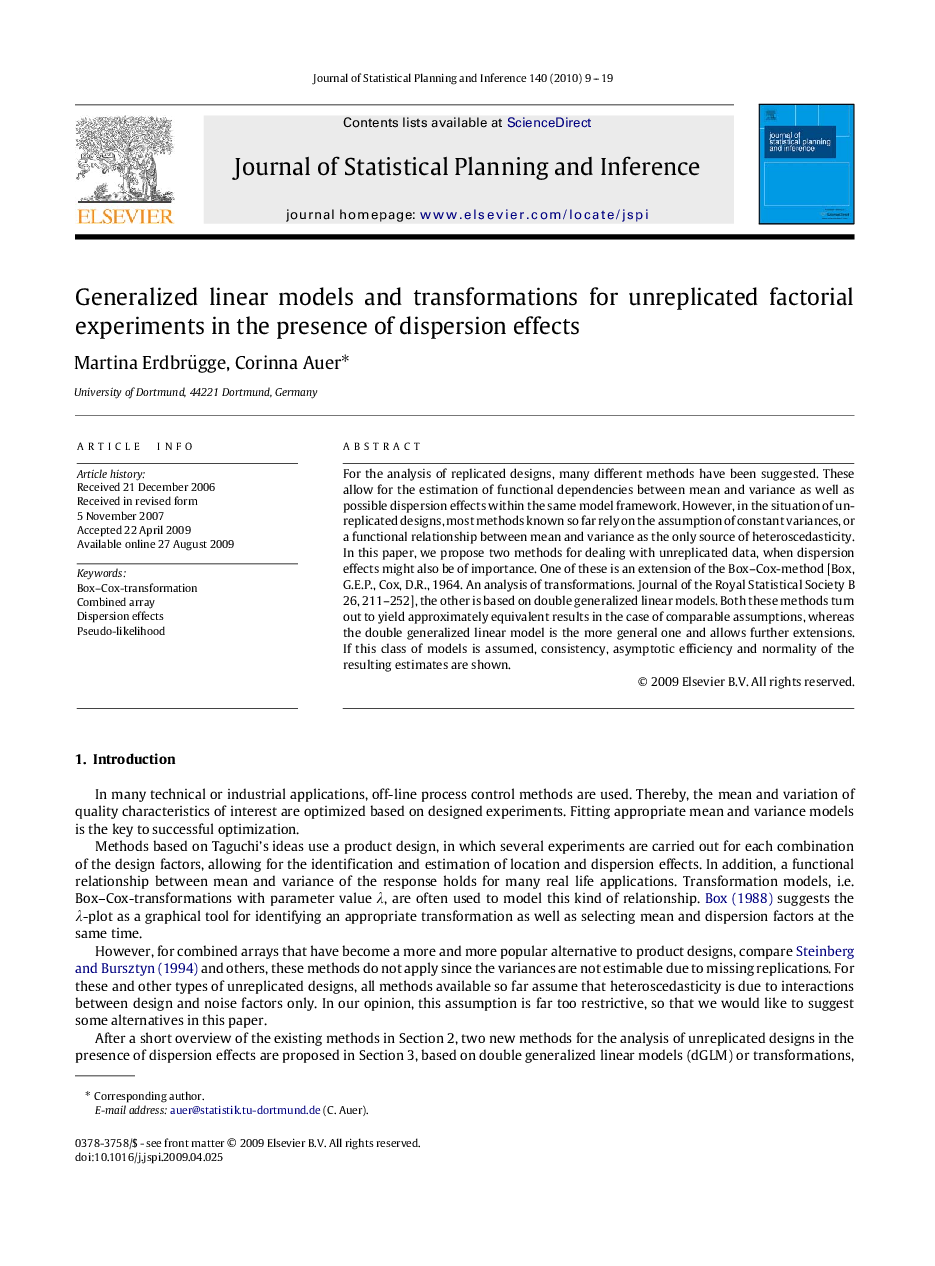| Article ID | Journal | Published Year | Pages | File Type |
|---|---|---|---|---|
| 1149425 | Journal of Statistical Planning and Inference | 2010 | 11 Pages |
For the analysis of replicated designs, many different methods have been suggested. These allow for the estimation of functional dependencies between mean and variance as well as possible dispersion effects within the same model framework. However, in the situation of unreplicated designs, most methods known so far rely on the assumption of constant variances, or a functional relationship between mean and variance as the only source of heteroscedasticity. In this paper, we propose two methods for dealing with unreplicated data, when dispersion effects might also be of importance. One of these is an extension of the Box–Cox-method [Box, G.E.P., Cox, D.R., 1964. An analysis of transformations. Journal of the Royal Statistical Society B 26, 211–252], the other is based on double generalized linear models. Both these methods turn out to yield approximately equivalent results in the case of comparable assumptions, whereas the double generalized linear model is the more general one and allows further extensions. If this class of models is assumed, consistency, asymptotic efficiency and normality of the resulting estimates are shown.
